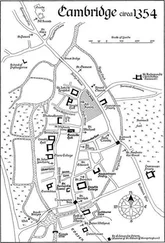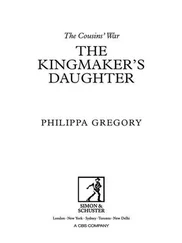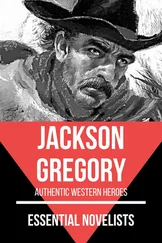Gregory David Roberts - Shantaram
Здесь есть возможность читать онлайн «Gregory David Roberts - Shantaram» весь текст электронной книги совершенно бесплатно (целиком полную версию без сокращений). В некоторых случаях можно слушать аудио, скачать через торрент в формате fb2 и присутствует краткое содержание. Жанр: Триллер, на английском языке. Описание произведения, (предисловие) а так же отзывы посетителей доступны на портале библиотеки ЛибКат.
- Название:Shantaram
- Автор:
- Жанр:
- Год:неизвестен
- ISBN:нет данных
- Рейтинг книги:4 / 5. Голосов: 4
-
Избранное:Добавить в избранное
- Отзывы:
-
Ваша оценка:
- 80
- 1
- 2
- 3
- 4
- 5
Shantaram: краткое содержание, описание и аннотация
Предлагаем к чтению аннотацию, описание, краткое содержание или предисловие (зависит от того, что написал сам автор книги «Shantaram»). Если вы не нашли необходимую информацию о книге — напишите в комментариях, мы постараемся отыскать её.
Shantaram — читать онлайн бесплатно полную книгу (весь текст) целиком
Ниже представлен текст книги, разбитый по страницам. Система сохранения места последней прочитанной страницы, позволяет с удобством читать онлайн бесплатно книгу «Shantaram», без необходимости каждый раз заново искать на чём Вы остановились. Поставьте закладку, и сможете в любой момент перейти на страницу, на которой закончили чтение.
Интервал:
Закладка:
"Don't worry," Zadeh muttered, putting a hand on Khaled's shoulder once more.
"I can't help it," the Palestinian insisted, looking around him into the darkness. "It's a fuckin' bad start. I think he's out there, staring at us, right now."
When Khader completed his prayers, we carried Siddiqi's body back to the canvas shamiana, and wrapped it in cloth until the rituals of burial could be performed on the following day. We worked for a few hours more and then lay down in the cavern, side by side for sleep. The snoring was loud, and the exhausted men were restless in their slumber, but I lay awake for other reasons. My eyes kept drifting back to the place, moonless and thickly shadowed, where Habib had disappeared. Khaled was right. It had started badly, Khader's war, and the words echoed in my wakeful mind. A bad start...
I tried to fix my eyes on the clear and perfect stars of that fated night's black heaven, but again and again my concentration lapsed, and I found myself staring at the dark edge of the plateau. And I knew, in the way we know without a word that love is lost, or in the sudden, sure way we know that a friend is false and doesn't really like us at all, that Khader's war would end much worse, for all of us, than it had begun.
CHAPTER THIRTY-FOUR
For two months of cold and ever colder days we lived with the guerrilla fighters in their cave complex on the Shar-i-Safa range. They were hard months in many ways, but our mountain stronghold never came under direct fire, and we were relatively safe. The camp was only fifty crow-kilometres from Kandahar. It was about twenty kilometres from the main Kabul highway and about fifty kilometres south-east of the Arghandab Dam. The Russians occupied Kandahar, but their hold on the southern capital was tenuous and the city was subject to recurring sieges. Rockets had been fired into the city centre, and guerrilla fighting on the outskirts claimed a steady toll of lives. The main highway was in the hands of several well-armed mujaheddin units. Russian tank and truck convoys from Kabul were forced to blast their way through blockades to resupply Kandahar, and that they did, from month to month. Afghan regular army units loyal to the Kabul puppet government protected the strategically important Arghandab Dam, but frequent attacks on the dam threatened their hold on the precious resource. Thus we were roughly in the centre of a triad of violent conflict zones, each of which constantly demanded new men and guns. The Shar-i-Safa range offered no strategic advantage to our enemies, so the fighting didn't find us in our well-disguised mountain caverns.
The weather shifted during those weeks to the cold heart of a severe winter. Snow fell in fitful gusts and squalls that left us sodden in our many-layered patchwork uniforms. A freezing mist drifted so slowly through the mountains that it sometimes hung suspended for hours at a time: still and white and as impenetrable to the gaze as frosted glass. The ground was always muddy or frozen, and even the stone walls of the caves we lived in seemed to ring and tremble with the icy chill of the season.
Part of Khader's cargo had consisted of hand tools and machine components. We'd set up two workshops in the first days after our arrival, and they were busy throughout the creeping weeks of the winter. There was a small capstan lathe, which we'd bolted to a homemade table. The lathe ran on a diesel engine. The fighters felt certain that there were no enemy forces within earshot, but still we dampened its noise with a little igloo of burlap sacks that covered the engine, leaving gaps for the air inlet and exhaust gas outlet. The same engine powered a grinding wheel and a speed drill.
With that assembly, the fighters repaired their weapons and sometimes adapted them to suit new and different purposes. First among those weapons were the mortars. After aircraft and tanks, the most effective battle weapon in Afghanistan was the Russian 82-millimetre mortar. The guerrillas bought the mortars, stole them, or captured them in hand-to-hand fighting, often at the cost of human lives. The weapons were then turned on the Russians, who'd brought them into the country in order to conquer it. Our workshops stripped the mortars down, refitted them, and packed them in waxed bags for use in combat zones as far away as Zaranj in the west, and Kunduz in the north.
Apart from the cartridge pliers and crimping tools, the ammunition and the explosives, Khader's cargo also included new parts for the Kalashnikovs that he'd purchased in the arms bazaars in Peshawar. The Russian AK-Avtomat Kalashnikova-was designed by Mikhail Kalashnikov in the 1940s, in response to German armament innovations. Toward the end of the Second World War, German army generals disobeyed the explicit orders of Adolph Hitler and produced an automatic assault rifle. The armaments engineer Hugo Schmeisser, using the germ of an earlier Russian concept, developed a weapon that was short, light, and fired its magazine of thirty bullets at a practical rate of more than a hundred rounds per minute. Hitler was so impressed with the weapon he'd previously forbidden that he named it the Sturmgewehr, or Storm Weapon, and immediately ordered its intensive production. It was too little, too late for the Nazi war effort, but Schmeisser's Storm Weapon set the trend for all assault rifles for the rest of the century.
Kalashnikov's AK-47, the most influential and widely manufactured of the new assault rifles, operated by diverting some of the propellant gases produced by a fired bullet into a cylinder above the barrel. The gas drove a piston that forced the bolt back against its spring, and cocked the hammer for the next round. The rifle weighed about five kilos, carried thirty rounds in its curved metal magazine, and fired the 7.62-millimetre rounds at around 2,300 feet per second, over an effective range greater than 300 metres. It fired more than a hundred rounds per minute on auto, and about forty rounds every minute on the semi-automatic, single-shot function.
The rifle had its limitations, and the mujaheddin fighters were quick to explain them to me. The low muzzle-velocity of the heavy 7.62-millimetre round defined a looping trajectory that called for tricky adjustments to hit a target at three hundred metres or more. Muzzle flash on firing the AK was so bright, particularly with the new 74 series, that it blinded the firer at night, and often betrayed his position. The barrel overheated rapidly, becoming too hot to hold. Sometimes a round grew so hot in the chamber that it exploded in the user's face. That fact explained why so many guerrilla fighters held the gun away from their bodies, or over their heads, in battle operations.
Nevertheless, the rifle worked perfectly after total immersion in water, mud, or snow, and it remained one of the most efficient and reliable killing machines ever devised. In the first four decades after its development, fifty million of them were produced-more than any other firearm in history-and the Kalashnikov, in all its forms, was carried as a preferred strike weapon by revolutionaries, regular soldiers, mercenaries, and gangsters all over the fighting world.
The original AK-47 was made of forged and milled steel. The AK-74, produced in the 1970s, was made from stamped metal parts.
Some of the older Afghan fighters rejected the newer weapon, with its smaller 5.45-millimetre round and its orange plastic magazine, preferring the solidity of the heavier AK-47. Some younger fighters chose the 74 model, dismissing the heavier gun as an antique. The models they used were produced in Egypt, Syria, Russia, and China. Although they were essentially identical, the fighters often preferred one to another, and the trade in the weapons, even within the same unit, was energetic and intense.
Читать дальшеИнтервал:
Закладка:
Похожие книги на «Shantaram»
Представляем Вашему вниманию похожие книги на «Shantaram» списком для выбора. Мы отобрали схожую по названию и смыслу литературу в надежде предоставить читателям больше вариантов отыскать новые, интересные, ещё непрочитанные произведения.
Обсуждение, отзывы о книге «Shantaram» и просто собственные мнения читателей. Оставьте ваши комментарии, напишите, что Вы думаете о произведении, его смысле или главных героях. Укажите что конкретно понравилось, а что нет, и почему Вы так считаете.












